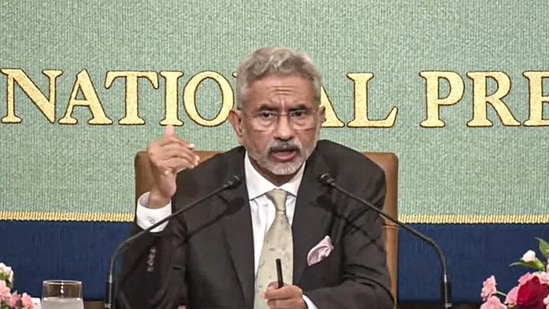Why China excluded India from the 5th China-South Asia Forum
Authored by: Sriparna Pathak, associate professor, Chinese Studies and International Relations, OP Jindal Global University, Sonipat.
India- China relations are not normal and cannot be unless China moves back to its pre-2020 position on the border. This has been stated multiple times by India’s external affairs minister S Jaishankar. However, what China has also told India multiple times is that it should not bother about the boundary dispute and must focus on trade. This has been a clear display of what China thinks of India’s concerns, including the most pertinent one--sovereignty. However, China also needs India’s huge market.

Given that India has performed brilliantly economically with a growth rate of 8% in the last quarter, China wants to leverage the positives of the Indian economy to its advantage. Thus, China in the last two months has engaged in a series of charm offensives to woo India, while disregarding India’s sovereignty at the borders. China wants the bilateral relationship to weigh only and always in its favour. The best way to keep India’s economic rise in check would be to keep it tied to trying to resolve border tensions, since managing a conflict and a troublesome border takes attention, resources, time and personnel which India could otherwise use to focus on its economic rise.
Another way to keep India’s economic rise in check is to keep it tied to its problematic neighbourhood. China ensures this by stoking problems in India’s neighbourhood and by increasing its influence in South Asian countries minus one. An example of this was the 5th CSACF meeting in Kunming. A similar initiative was proposed by Beijing in 2021, focusing on Covid-19 vaccines and poverty alleviation, which included Afghanistan, Bangladesh, Nepal, Pakistan, and Sri Lanka, but excluded India, the Maldives, and Bhutan. So, the 5th CSACF meeting minus India is not a one-off instance where India got excluded accidentally. It is a clear-cut Chinese strategy to assert its influence in South Asia independently of India’s regional leadership.
The 5th CSACF meeting coincided with the eighth China-South Asia Expo, in which Indian traders participated. The difference between the 5th CSACF meeting and the China South Asia Expo is that in the former heads of States take part whereas in the latter, civilians and traders take part. The question that arises here is about the duality of the approach taken by China. In these two separate events, China’s attitude towards India becomes clear. CSACF minus India is a clear message to India that it does not want India as an equal partner, and does not see it as a leader. In the second case, it wants to keep up appearances in the Indian business circuit and civil society that it wants a healthy relationship with India, so that the civil society at large pressure the ruling government for taking more pro-China policies. Economically, India has been suffering immense trade deficits with China for at least two decades, owing to the existence of tariff and non-tariff barriers against Indian products in China and the lack of equal market access for Indian goods.
However, through the Expo, China has tried to maintain an appearance that it wants more Indian traders. The reality is quite the opposite. For the last two years, the United States (US) had emerged as India’s largest trading partner, replacing China. This year by a minuscule margin, China has re-emerged as India’s largest trading partner. The difference between India-US trade and India-China trade is a mere $ 0.1 billion. But China has rejoiced in this. China, with its faltering economy and backlashes from across the globe needs India to loosen some of the blocks it had put in place on Chinese investment and traders and apps in India. The best way to do this would be to put up a show that China welcomes Indian traders. In short, China wants India tied down to its tumultuous neighbourhood, prevent its economic rise, while violating its sovereignty and exploiting its huge market to its own advantage.
China has been largely successful in keeping India tied down to the neighbourhood. Pakistan, a state sponsor of terror is backed by China, and the threat of Pakistan-originated terrorism remains high in India. To ensure security, India has to invest immensely in its security apparatus, taking away from the amount it could have spent on strengthening its own infrastructural deficits which would then go a long way in ensuring India’s economic rise. The current Maldives government is a pro-China one and has come to power on an India Out campaign. Nepal and Bangladesh so far have been balancing relatively well between India and China, while Sri Lanka is indebted to China. India, nevertheless has been growing at the fastest rates in the world, and its investments in South Asian countries have actually been more people-centric. However, India has not advertised this enough or used its charm offensive adequately. At the moment, given that India continues to grow and prosper, China will stoke more problems in South Asia, and the 5th CSACF meeting is just the tip of the iceberg.
This article is authored by Sriparna Pathak, associate professor, Chinese Studies and International Relations, OP Jindal Global University, Sonipat.





